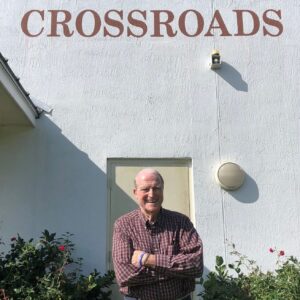
Tony Allerton is a local hero.
When you’re my age, It’s not too often that you get to have lunch with someone 36 years your senior.
It’s a special bonus when that lunch partner is a local legend.
Recently, I had the privilege of dining with Tony Allerton, the longtime leader behind the Crossroads Club, a non profit that has quietly but effectively saved thousands of lives for the past 42 years.
Crossroads helps those in recovery rebuild their lives. Over my 36 years in Delray I have met many people who credit Crossroads with saving them.
In fact, when we dined at Granger’s, a gentleman crossed the restaurant grabbed our check and thanked Tony for a lifetime of good deeds.
Isn’t that cool!?
I thought it was.
Tony and I shared our history together over grilled cheese sandwiches—over the years we’ve had lunches, ribbon cuttings and meetings where we discussed the important work being done at Crossroads.
He told me about coming to Delray in the 1950s and we discussed all the changes we’ve seen, all the people we’ve known and all the mayors he’s worked with.
I loved hearing the stories but more than that I picked up on something extraordinary.
Yes, we talked about the past, but we also talked about the future. That’s where Tony was focused. A golf tournament to raise money for Crossroads, tomorrow’s meetings, future funding sources so he can help more people get their lives on track.
At 95, this wonderful man, with a magnetic smile and energy to burn, was focused on today and tomorrow.
How cool is that? How beautiful and magnificent too.
That’s what legends are made of; optimism, aspiration and an enduring desire to serve others.
Tony Allerton is a treasure. A Delray treasure. We are so lucky to have him.
 We attended SUD Talks on Saturday night at the Crest Theater.
We attended SUD Talks on Saturday night at the Crest Theater.
